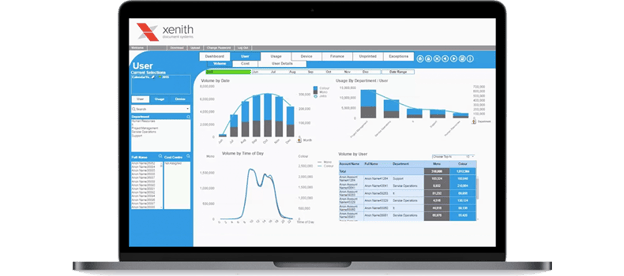Stay up to date with our latest news and insights
Supporting description on the types of content that feature in the blog.

Tour De France competitors know that if they set off for their final sprint just half a second before the optimal time, their chances of winning could be severely impeded. Analytics help to tell them this.
After a competition or event, many athletes will rewatch and analyse their performance to improve upon it the next time. Statistics and data help to show what can be done better and how they can become more efficient.
The same goes in business; analytics help us to work out what worked and what didn’t but unless your job revolves around numbers and statistics, analysis of that kind can easily be dismissed as boring. But here’s why business analytics are so important, particularly for print:

Business decisions that aren’t based on data are guesses, at best.
With analytics, you can improve the profitability of the organisation, calculate ROI accurately and create a more productive working culture because you know the numbers stack up.
In print, for example, analytics are often the difference between a business spending far too much on consumables or staff wasting time on poor printing practices. Using in-depth printing analytics, it’s possible to dig deep enough to see which processes can be optimised and where the high costs are coming from. They can then be confronted and reduced.
With analytics in hand, you can see exactly what is and isn’t working.
For instance, if someone is consistently using the wrong output device for a daily print job, you’ll only ever identify the extent of the problem and its culprit if you have access to the right data.
Flow of information is vital in the digital age, but it’s how the information is used that makes a company competitive.
After all, why collect data if you fail to do anything with it?
Business analytics combine two things to aid decision-making and raise a company’s competitiveness: available data and existing operational models. One cannot exist without the other.
There’s a good chance that you’re sitting on a lot of print data in your print management system, but how are you using this data. For example, are you actively looking into departmental spending, printing peaks, common document types being printed or even which users have the highest print costs?
If not, you might be missing out on some key efficiency and cost savings.
Making decisions based on a guess is risky (even in print), but making decisions based on performance, trends and behaviour will avoid throwing caution to the wind.
Print can often be seen as a necessary cost that might be absorbed because you need printers, but that doesn’t mean processes can’t be optimised and risks reduced. Spotting and taking action on printing inefficiencies using analytics is a great way get a better ROI from printing.
There are three common reasons businesses fail to make the most of analytics:
There’s an assumption that data analysis requires significant amounts of management time to be effective and ensure staff don’t get lost in spreadsheets full of meaningless numbers.
Print data needs to be collected. It then needs to be analysed and decisions made; that requires people and the right systems - and a significant investment, as a result.
For print analytics to truly shine, data needs to flow freely through the organisation. And, with so many disparate systems often in place, data movement and integration becomes a very manual affair.
These issues and concerns can be surprisingly simple to fix - your print management system is already collecting the data, you just need a way of pulling this data out and analysing it.
User Analytics does this for you leaving the decision making based on real-time, in-depth information. Grab the data you need and easily export it for use. A few hours of data analysis can become 20 minutes of compiling a thorough report with all the data you need.
Don’t let your company treat printing as a necessary evil, instead, use analytics to improve efficiency, encourage digitalisation and make a return on investment through smart decision making and cost savings.
Supporting description on the types of content that feature in the blog.

20-09-2024
Digital document management tools offer a range of compelling benefits for businesses, including a PDF editor, a file converter and a form generator. You can also integrate with digital signatures qui...

20-09-2024
When choosing a SaaS software to deal with your company’s PDF documents and enable forms to be digitally sent and signed, you’ll want a product that’s user-friendly and easy to use. With Tungsten’s Po...

11-07-2024
Belkin is a global technology company that provides high-quality electronics products, from wireless chargers to power banks. Their people-centric approach and best-in-class functionality have positio...